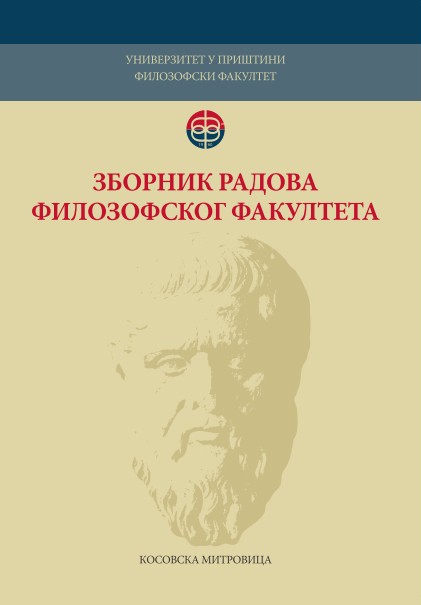Барокна геометрија реченице у делу Кратка всемирна историја (1831) Георгија Магарашевића
Baroque sentence geometry in Kratka vsemirna istorija by Georgije Magarašević
Author(s): Aleksandra M. AntićSubject(s): Language studies, Language and Literature Studies, Studies of Literature
Published by: Филозофски факултет, Универзитет у Приштини
Keywords: the history of the Serbian language; syntax; baroque sentence; Georgije Magarašević
Summary/Abstract: The paper represents the examination of the distinctive characteristics of the Serbian baroque sentence found in the work Kratka vsemirna istorija (1831) by Georgije Magarašević, written in Dositej's type of language. The specificity of the syntax of the Serbian baroque, which was greatly influenced by the syntax of the Latin and the German language, is seen in the final position of the infinitive, the final position of the predicate, enjambment, inversion i.e. adjectives positioned after nouns, genitive in the anteposition, adverbs in the anteposition, the parallelism in syntax, the presence of exclamations, exclamatory sentences and the vocative case, and in the object found in the anteposition. The analysis of the work has shown that the infinitive in the final position could be found both when it is part of the future tense and when it is an addition to the verb with an incomplete meaning. We have also established that both simple and compound verb forms functioning as predicates could be seen at the end of a sentence. In the work, there are some examples of enjambment achieved by using verbs, the enclitic form of personal pronouns, the words therefore, however, and oneself, the adverb soon etc. In Kratka vsemirna istorija, it can be seen that the adjectives positioned after nouns are quite often used. Through the thorough study of the work, we have reached a conclusion that the genitive in the anteposition is most often used to show possession, and adverbials, as well as comparative and non-comparative adjectives, can also be found in this position. Numerous examples of the syntactic parallelism achieved through the repetition of pronouns, conjunctions, adjectives, and predicates were also noted. Exclamations, exclamatory sentences and vocatives were not that numerous in the work that was analysed. The object which is in the anteposition, whether it was shown through a single lexeme or a phrase, is typical of Kratka vsemirna istorija. Having analysed all the aforementioned characteristics in the Kratka vsemirna istorija, we have concluded that the language of Georgije Magarašević was not that different from his contemporaries (Jovan Sterija Popović, Jovan Hadžić, and Jovan Subotić), at least not on the syntactic level.
Journal: Зборник радова Филозофског факултета у Приштини
- Issue Year: 49/2019
- Issue No: 1
- Page Range: 141-163
- Page Count: 23
- Language: Serbian

